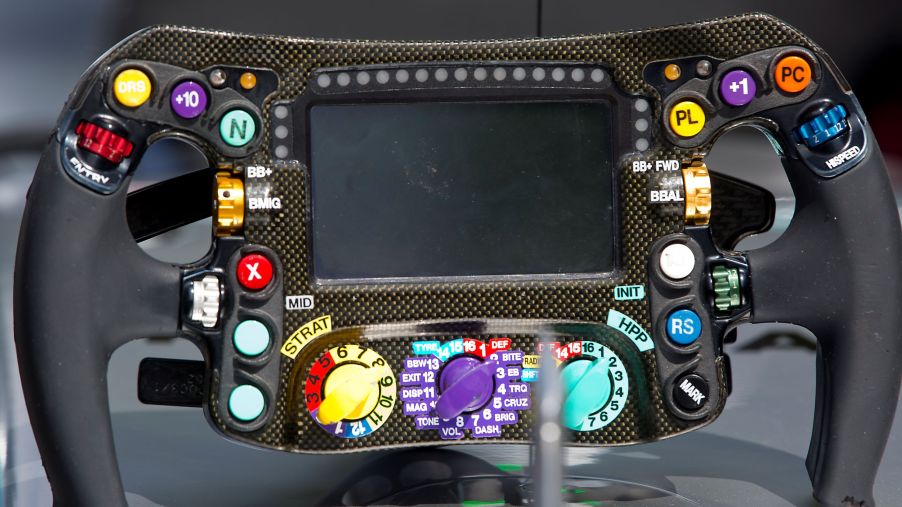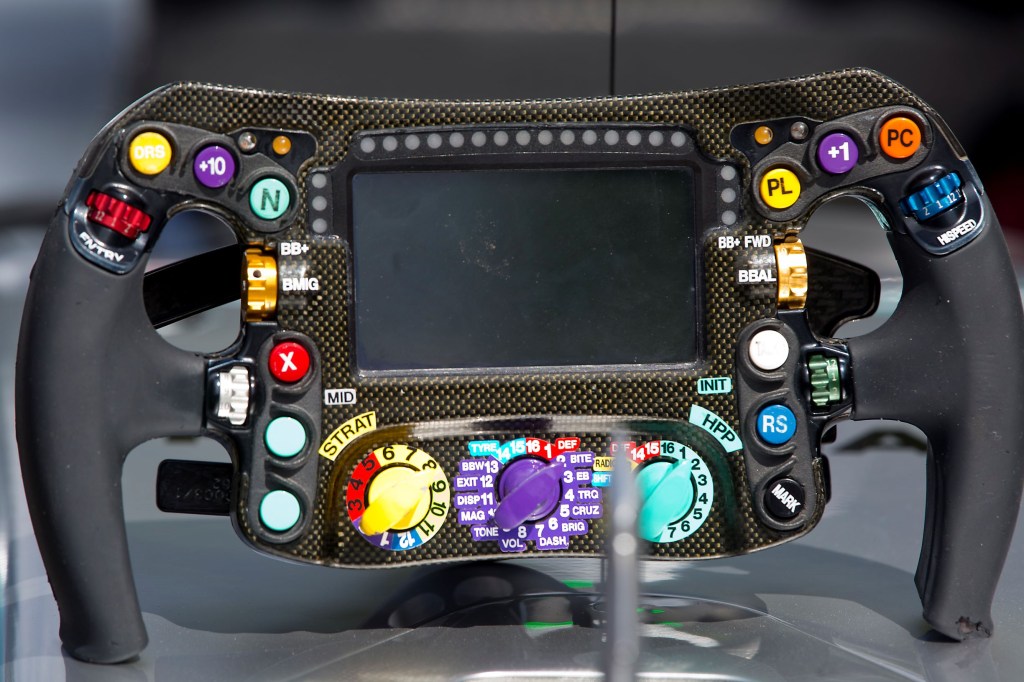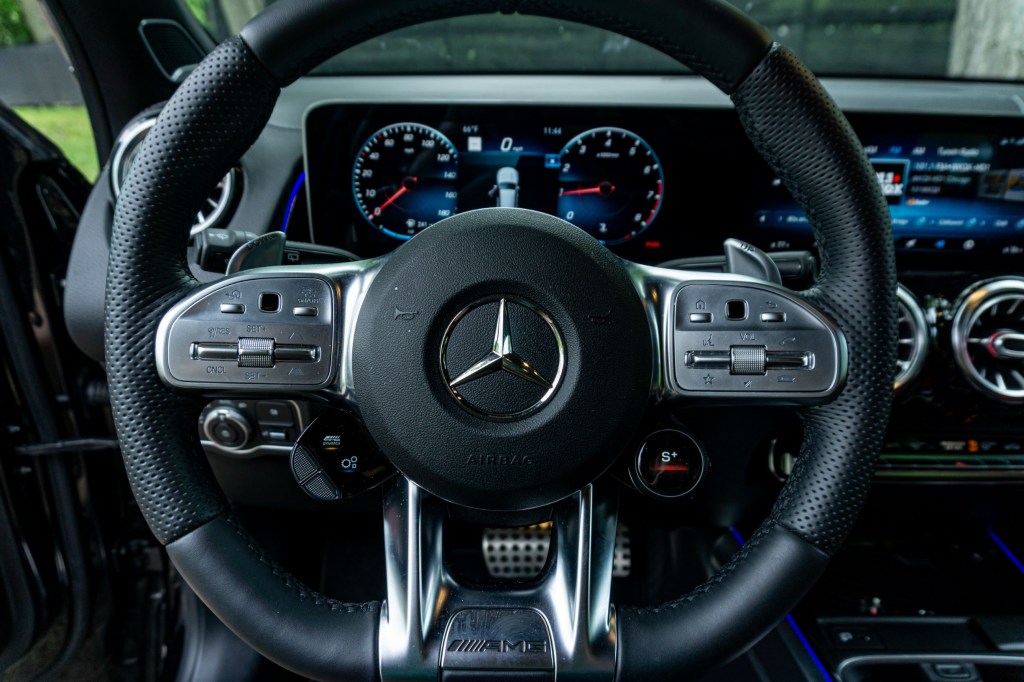
An F1 Car’s Steering Wheel Is as Complex as the Rest of It
From the engine to the wheels and tires, every part of a Formula 1 race car is designed for high-speed, high-intensity performance. The search for a competitive edge shapes everything, including the F1 car’s steering wheel. And if you thought regular car steering wheels were getting cluttered, that’s nothing compared to what an F1 driver handles.
An F1 steering wheel isn’t built the same way as a regular one

There are several significant differences between an F1 steering wheel and the one in your road car. And the list starts with how their shapes and construction methods.
Tesla’s potentially dangerous ‘yoke’ notwithstanding, most road car steering wheels are, well, wheel-shaped. I.e., they’re round or rounded. Originally, steering wheels were usually made of metal with a wood grip. But modern car steering wheels are mostly made of plastic resin and wrapped in fabric or leather. And while two-spoke wheels occasionally appear, three-spoke ones are the most common.
Modern F1 cars’ steering wheels, though, are markedly different. For one, instead of a circular grip linked to multiple spokes, an F1 steering wheel is more like a set of linked grips. It’s arguably closer in design to the Tesla yoke than the wheel in, say, a Miata. But as we’ll get to shortly, Tesla’s ‘wheel’ has noticeably fewer buttons, switches, and dials.
Secondly, rather than plastic resin, an F1 steering wheel is mostly made out of carbon fiber. Mercedes’ wheel also incorporates titanium, copper, silicon, and fiberglass. Some even have gold, HotCar reports, likely due to the incorporated electronics. And rather than fabric, the grips are made out of rubber compounds, The Drive notes. Plus, these wheels are hand-built.
Like road cars, F1 cars are subject to safety regulations, which include requirements for the steering wheels. And, just like the ones in road cars, the F1 wheels are torture-tested to check their durability. However, the forces and tests involved are more extreme than what road cars experience, The Drive explains. F1 steering wheel testing involves leaving it underwater for several hours, impact testing and repeated running on simulators and shaker rigs.
This durability testing isn’t just for the wheel itself, though, but also for what it contains.
The F1 steering wheel does a lot more than just turn the race car

While an F1 car’s steering wheel doesn’t look like the one in a road car, the shape and construction aren’t necessarily what first catches the eye. More commonly, what stands out is the sheer number of knobs, switches, dials, lights, and screens. To call it a significant step up from wheel-mounted audio controls is almost an understatement.
To be sure, F1 steering wheels didn’t initially have all of those controls. But over the years, race cars became less analog and more digital, gaining more and more electronic aids. More tech means more things to control and adjust. And the only way to do so and steer the car is to put the controls on the steering wheel, Road & Track explains.
Some of the things on an F1 wheel might be recognizable. Many performance cars these days have shift paddles, for example. Some aftermarket wheels, especially racing ones, come with quick-release hubs. And modern Ferraris have ‘F1-style’ steering wheels.
Real F1 wheels, though, contain even more controls. They let drivers adjust engine calibration maps, telemetry recording, differential and brake balance, and energy recovery. There are buttons to control the pit-lane speed, radio, drink-dispensing system, DRS, and the push-to-pass system. Plus, status LEDs and a display. And each team has its own additional, secret controls, too, The Drive points out.
Imagine paying attention to all of that while hurtling around a track at triple-digit speeds.
Designs constantly change and evolve
F1 race car parts aren’t cheap, and that includes the steering wheel. The exact cost differs between teams, but Mercedes’ “ballpark” estimate stands at $36K, The Drive reports. And that’s just for one wheel.
But teams don’t have just one steering wheel per car. Each driver gets a personalized wheel, which might have different grips, a repositioned display, larger or smaller paddles, etc. And as the race cars get new features or the drivers’ preferences change, the steering wheels change to match. But even if nothing changes, teams might go through anywhere from three to eight wheels per season, The Drive notes.
Going fast requires the tools to match. And it’s why an F1 steering wheel looks the way it does.
Follow more updates from MotorBiscuit on our Facebook page.


